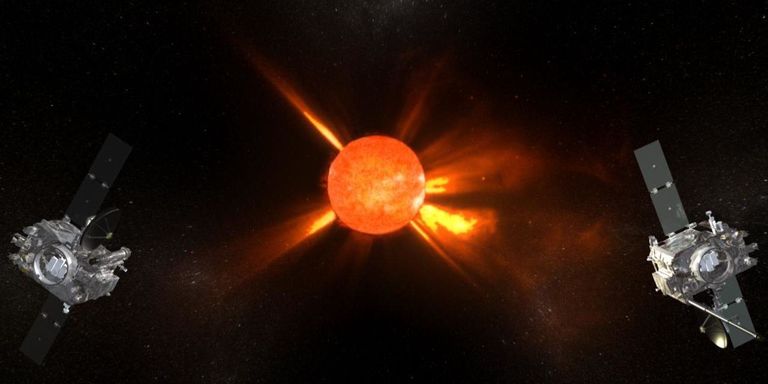Space is full of hazards. The Earth, and it’s atmosphere, does a great job of shielding us from most of them. But sometimes those hazards are more powerful than even those protections can withstand, and potentially catastrophic events can result. Some of the most commonly known potential catastrophic events are solar flares. While normal solar activity can be deflected by the planet’s magnetic field, resulting in sometimes spectacular auroras, larger solar flares are a danger to look out for. So it’s worth celebrating a team of researchers from the International Space Science Institute which found a way to better track these potentially dangerous natural events.
Extremely large coronal mass ejections (CMEs) are relatively rare, and when they do happen they normally aren’t pointed at Earth. This was the case in 2012, when a massive solar flare missed Earth, but could have knocked out power grids and destroyed satellites on an entire hemisphere of the planet.
UT Video discussing the severity of solar storms.Flares as large as the one in 2012 are relatively easy to detect using conventional sensing methods, because of their size but also their positioning. These sensors can watch for signs of brightening on the Sun’s surface that are indicative of a solar flare, or watch the flare itself as it passes out of the sun into the blackness of space. Unfortunately the same sensing techniques are not able to detect the most important kind of CMEs – those that are aimed right for us but don’t cause any brightening.
These CMEs, which don’t produce any telltale signs on the Sun’s surface, are known as “stealth” CMEs. Usually we only notice these when they actually hit the Earth, and don’t have a good indication of where they formed on the Sun. However, the researchers used data collected on four stealth CMEs by NASA’s STEREO spacecraft that did in fact track them back to their origins on the Sun.
Anton Petrov’s video discussing the 2012 solar flare.Credit – Anton Petrov YouTube Channel
When they subsequently analyzed those origin points with other data collected simultaneously, they noticed a changing brightening pattern that appeared for all four stealth CMEs. They believe these changes are indicative of the stealth CME’s formation, allowing scientists precious time to detect and prepare for a potential massive CME hit once similar patterns are detected.
Detecting the patterns themselves can prove tricky though. STEREO’s work in finding the source region of the CMEs used in the study was simply lucky – the spacecraft happened to be looking in the right place at the right time. To fully flesh out this technique, more data from an angle off-set from Earth will be needed to model the structure of the newly found CME and its origin region.
 Twin STEREO spacecraft monitoring the Sun for solar storms in this artists’ impression.
Twin STEREO spacecraft monitoring the Sun for solar storms in this artists’ impression.
Credit – NASA
Help is on the way though – ESA launched the Solar Orbiter last year, which should be able to collect the necessary data as part of its mission. It can also help with an even more challenging problem – detecting “super-stealth CMEs”, which don’t show up on a coronagraph, a standard tool used to detect other types of solar flares.
Understanding is the key to defeating, or at least coping with, this potentially deadly environmental hazard. Now we have a tool to predict more of those hazards, and a path forward to detect even more of them.
Learn More:
Frontiers – New method predicts ‘stealth’ solar storms before they wreak geomagnetic havoc on Earth
Frontiers – Investigating Remote-Sensing Techniques to Reveal Stealth Coronal Mass Ejections
The Sun – Nasa boffins attempt to solve the mystery of ‘stealth solar flares’ which erupt without warning
UT – Do Ripples on the Surface of the Sun tell us that a Flare is Coming?
Lead Image:
Images showing the four CMEs used in the study.
Credit – Palmerio, Nitta, Mulligan et al.

